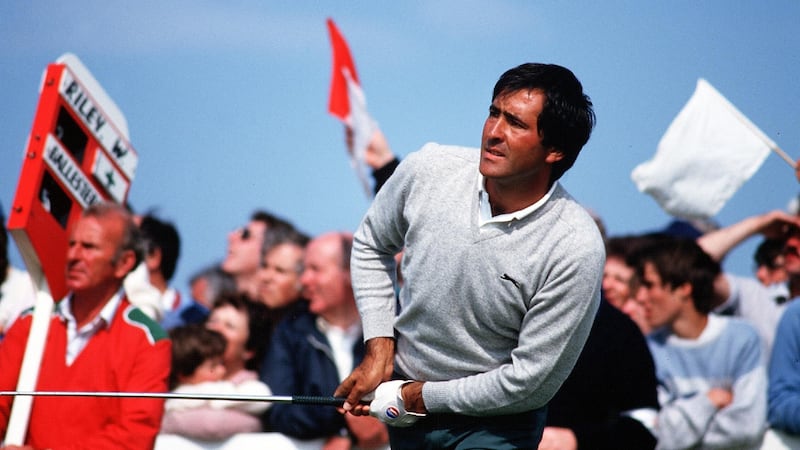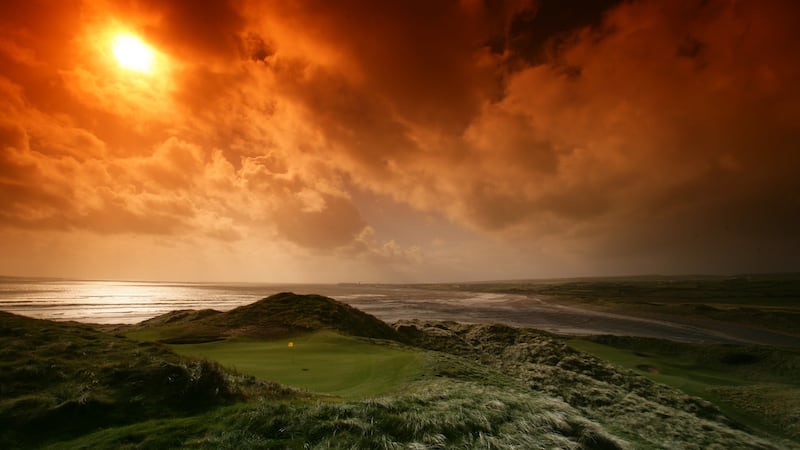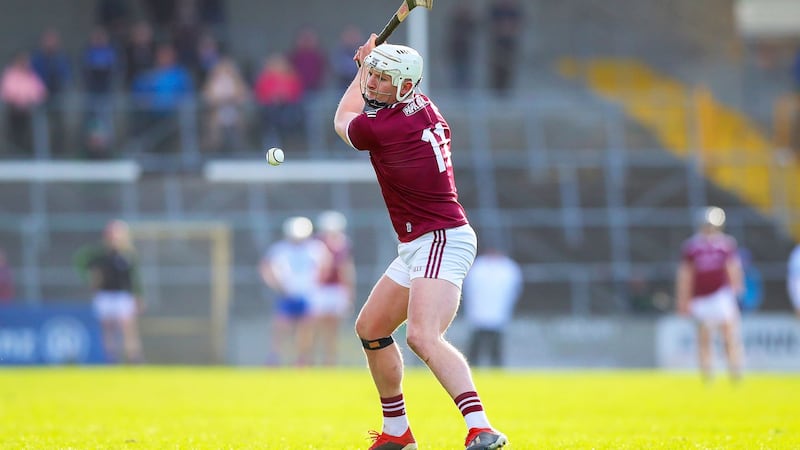The symbol most associated with Lahinch Golf Club is that of the “Rampant Goat.” It is on the club crest, and a wonderfully crafted statue of the animal is located by the first tee. It remains to be seen if this latest edition of the Dubai Duty Free Irish Open will, to use sporting parlance, be the “Greatest Of All Time” but we can rest assured it will be one of the most unique.
Given the course's proximity to the village, and with a programme of music acts each evening ranging from Sharon Shannon to Hermitage Green, the expectation is that a carnival-like atmosphere will prevail. That, for sure, is in keeping with Paul McGinley's philosophy of providing an experience for player and spectator alike, ensuring that entertainment – on and off the course – is all part of the bill.
Even without the headline act of Rory McIlroy on this occasion, the vibrancy of the Irish Open is undisputed.
Where there was a time the tournament seemed to be on life support, when there was no title sponsor from 2011 to 2014, surviving only with the aid of the European Tour and financial support from the government, the transformation in recent years has been quite extraordinary: the low point, in terms of prize money, came in 2011 when the total purse was €1.5 million and winner Simon Dyson won €250,000. Next week's purse comes in at €6.15 million with the winner walking away with €1 million.
A number of factors have contrived to ensure this rebirth. Most significantly, the arrival on board of Dubai Duty Free as a title sponsor; secondly, the tournament's elevation to one of the elite Rolex Series events; and, thirdly, the decision for a player to take on the responsibility of acting as tournament host. McIlroy fulfilled this role from 2015 (when DDF first came on board as sponsor) and McGinley has taken on the baton this time. Others, among them Darren Clarke, Pádraig Harrington and Graeme McDowell are lined up going forward.
Aside from the money game, it is worth noting how the strength of the field has been on an upward trend since the tournament was upgraded in 2015 and, in many ways, returned to the position it once held in the halcyon years of the 1980s into the '90s when a veritable who's who of the sport in turn lifted the title. Seve Ballesteros. Bernhard Langer. Ian Woosnam. Jose Maria Olazabal. Nick Faldo. On and on.

In terms of world ranking points on offer, in establishing the strength of the field, Miko Ilonen’s win in the 2014 tournament at Fota Island earned him 26 points. To put it in perspective, the strength of the field that year was akin to, say, a tournament like the Czech Masters. Since then, the Irish Open has moved back to a top-ranked event on the European Tour and with world ranking points comparable to regular tournaments on the PGA Tour.
When McIlroy – with DDF on board – took on the host role at Royal County Down, and used favours to get the likes of Sergio Garcia, Rickie Fowler and Ernie Els in the field, the strength of the field jumped to 310 with the winner (Soren Kjeldsen) getting 48 points. In the years since, the points on offer to the winner have been at the higher end: 2016 (46 points); 2017 (48 points); 2018 (38 points). It is expected that the winner next week will get 44 points, which in its own way is a tribute to how McGinley, like McIlroy before him, has networked behind the scenes to ensure a strong field.
McGinley has acknowledged it was “a very tough process” to get such a strong field together in what is a more condensed playing season, especially for those on the PGA Tour.
“I think that the players have a lot of power at the moment. It’s very difficult to sell a product like the Irish Open when the players ultimately are dictating. We obviously don’t pay appearance money, so we can’t go up to them and offer them a deal and get a commitment a long time out. It might have happened in Irish Opens in the past [back in the Carroll’s era of sponsorship], that’s not the case now. What we do offer is a huge prize fund and a brilliant golf course, a links course two weeks before the Open [at Royal Portrush].
“Unless you’re hosting something like The Players or a Major or something like a Ryder Cup, it’s just not feasible to expect all of the top players [in the world] to play.”
In fairness to McGinley, the Dubliner has done a very good job in a difficult environment in gathering a field headlined by Jon Rahm and also featuring Tommy Fleetwood, Louis Oosthuizen and Matt Wallace from inside the world's top 25.

The absence of any of the significant Americans might raise an eyebrow or two from those looking in from the outside, but for those who ply their trade inside the ropes it doesn’t come as any great surprise on a number of fronts.
One of the main reasons is actually along the lines of that given by McIlroy in explaining why he would be bypassing the Irish Open this week, and that is because a lot of players like to play the week before a Major [playing the Scottish ahead of the British Open] but also complicated by the fact that the season’s final Major at Portrush is followed immediately by a WGC event in Memphis. Put simply, players can’t play every week and have to work out the schedule that is best for them.
“The Irish Open is the Irish Open. It’s been going for years and years, we’ve had all the great players come in the past,” said McGinley. “It’s had a great history of winners and will continue to do so. I think, in relative terms, for the way the modern game is at the moment, we’re holding our own in terms of quality of field.”
Shane Lowry isn't at all surprised that the American players haven't flocked to the surfside links, pointing out "we don't go over and play two tournaments in a row before the US Open. I personally think the Irish Open should be moved to a different date [later in the season] around Wentworth time in September. You know, the Americans, especially the top, top players, they don't want to know anything about playing three weeks of links golf. Bad weather? They just don't like that."
That argument about the possibility of moving back the Irish Open to a later slot in the calendar and getting rid of the three-week links swing is for another time. What this year's Irish Open brings to the table is a strong field, as reflected in the world rankings on the line, and a novel first-time venue on a links – originally designed by Alister MacKenzie and sympathetically upgraded by Martin Hawtree – which has that 19th hole of the village a mere wedge away.
Its uniqueness should ensure it is one of the very best shows on the European Tour this season.

Changes not universally welcomed
We all know that the professionals play a different game to the rest of us, but – for next week’s DDF Irish Open – they will also be playing a very much different links with two Par 5s reduced to Par 4s for the tournament scorecard.
The second hole – which runs 523 yards from tee to green – and the fourth, the famous blind hole known as Klondyke which measures 475 yards, will play as Par 4s, which has the effect of reducing the par of the course from 72 to 70 for the championship.
“They don’t want us to make birdies next week obviously,” Shane Lowry about the decision to take out two Par 5s which are usually score-making holes on a player’s card, adding more seriously: “I’m not a fan of that [reducing Par 5s to 4s]. Their argument was if it was downwind you would be hitting driver-8 iron [in]. But if that’s downwind, you will be hitting driver-3 wood into the third. It all balances out. It is what it is, only a number at the end of the day.”
What has not been affected in the switching and changing is the fact that the Par 3 fifth hole – known as The Dell – will probably be one of the most fun holes any player will face on tour this season. And, for spectators attending, the blind tee shot over a hill to narrow green is guaranteed to provide great entertainment.
Hurlers take aim at Pro-Am
Before a shot is hit in anger in the actual championship, some heavy hitters from the world of entertainment and other sports will be in action in Wednesday’s eve-of-tournament Pro-Am.
Singer Niall Horan – whose company Modest! Golf have signed Ryder Cup player and three-time European Tour winner Tyrrell Hatton to their growing management portfolio – is the headline act and will play in the team event with impressionist and comedian Conor Moore and actor James Nesbitt. Their professional will be Italian Guido Migliozzi, who is part of the Modest! Golf stable.
In terms of other sportsmen, hurlers are very much to the fore. With Galway exiting the championship early doors, Joe Canning can show his golfing prowess when he teams up with Shane Lowry. Clare player Shane O'Donnell, Limerick's Cian Lynch and current Wexford hurling manager Davy Fitzgerald (who has played in the South of Ireland) are also among the hurlers in the field.

Horan isn't the only singer playing, as former Westlife performer Brian McFadden and Boyzone's Keith Duffy are in the line-up.
And the longest hitting amateur of all will be James Sugrue, recent winner of the British Amateur title. Sugrue has been added to the Pro-Am but won't be competing in the tournament itself as he will be playing on the Ireland team competing in the European Championships in Sweden next weekend.













